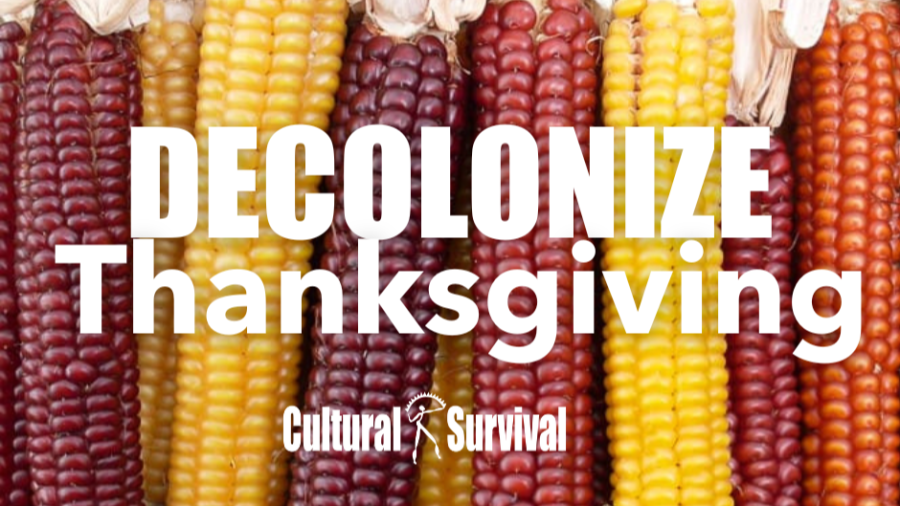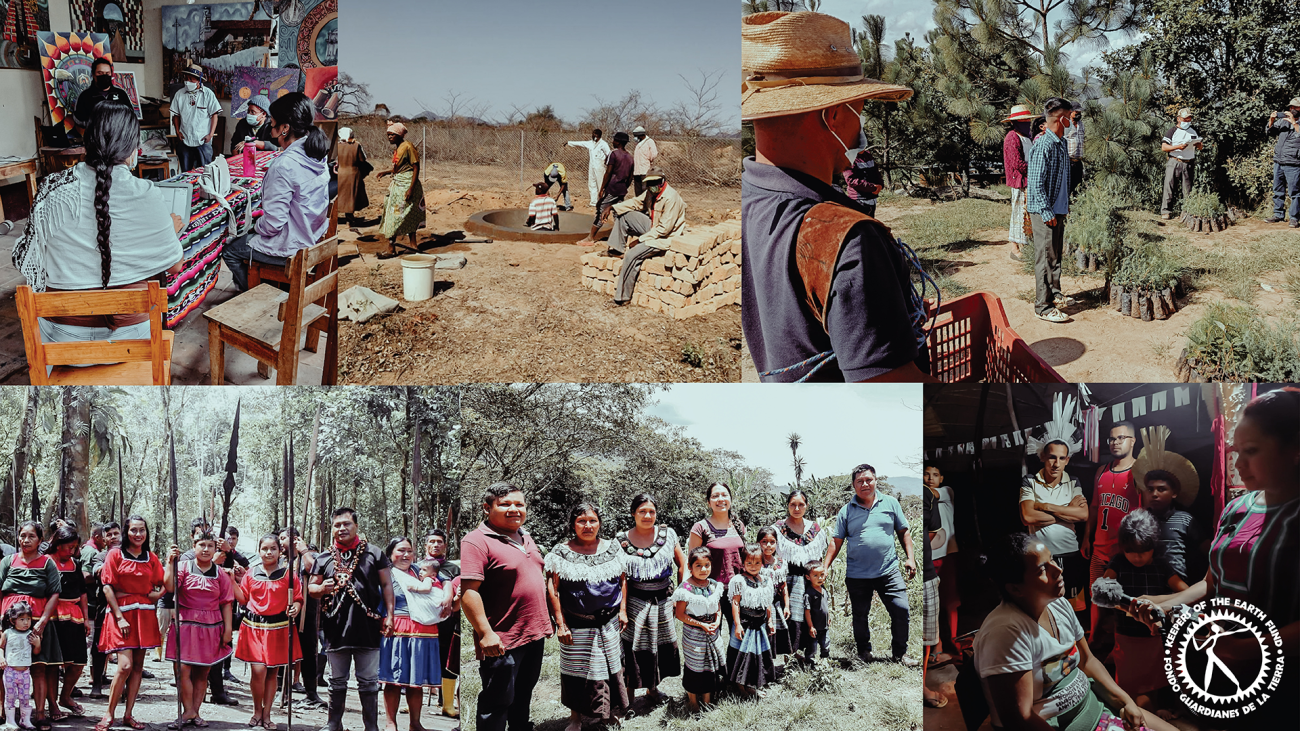
The Keepers of the Earth Fund (KOEF) team is pleased to announce the list of our 2022 partners, whose projects we support in this complex year where climate change and the pandemic continue to be at the forefront of concern, while the defense of Indigenous territories requires ever greater efforts.
In 2022, the Keepers of the Earth Fund supported 65 projects totaling $308,067 in 20 countries. The projects address diverse topics that have the community as their center, but that can be generally categorized into six areas: Indigenous art and creativity; Indigenous response to climate change; Indigenous defense, autonomy, and self-determination; Indigenous language revitalization; intergenerational Indigenous Knowledge and biocultural heritage transmission; and food sovereignty.
Across our programming, Cultural Survival works to strengthen Indigenous women’s and youth leadership, and this round of financing reflects this programmatic priority: a majority of the projects involve young people, and a majority are led by women. Notably, one-fifth of this year’s partners are recurring partners from past years, with some continuing the work started with previous grants. This is a reflection of our goal to seek long-term collaborative relationships.
The Keepers of the Earth Fund is an Indigenous-led fund at Cultural Survival designed to support Indigenous Peoples' advocacy and community development projects globally. Since 2017, we have supported 238 projects in 38 countries through small grants and wrap-around support. In 2022, we celebrated a milestone of 1 million dollars provided in small grants directly to Indigenous communities, collectives, organizations, and traditional governments to support projects designed by them and in accordance with their Indigenous values. Based on the United Nations Declaration on the Rights of Indigenous Peoples, Cultural Survival uses a rights-based approach in our grantmaking strategies to support grassroots Indigenous solutions through the equitable distribution of resources to Indigenous communities.
Meet our 2022 Keepers of the Earth Fund Grant Partners.
Indigenous Art and Creativity
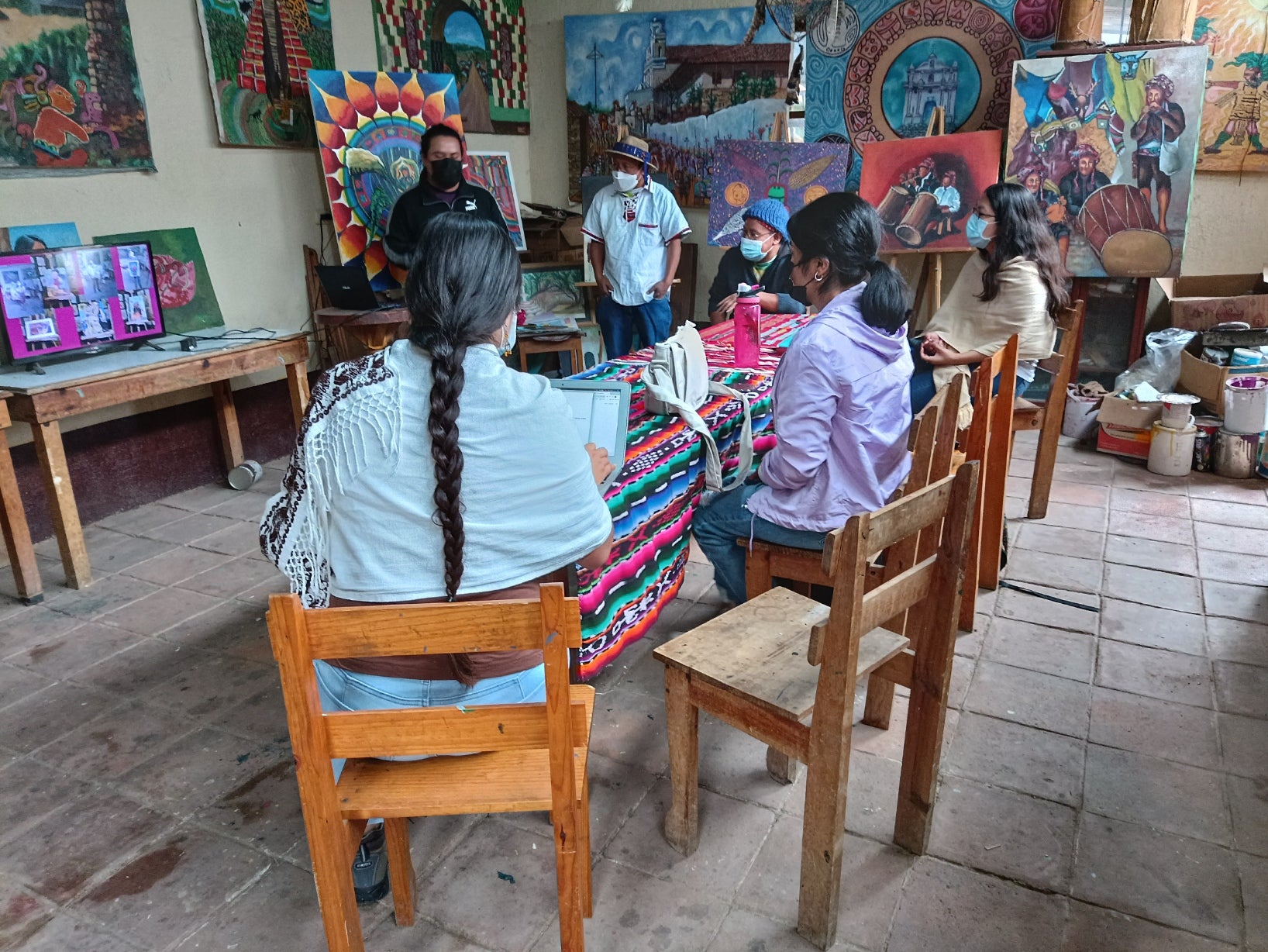
Maya Itz'at Art and Culture Association (Ki’che’ Maya), Guatemala
This collective located in Chichicastenango has been working on Mayan art for several decades with Mayan artists through a gallery and activities open to the public. This year, with the support of the Keepers of the Earth Fund, they will expand their range of activities with a series of Mayan art and culture workshops for children and young people, where the epigraphy and philosophy of their culture will also be addressed. At the end of the program, there will be an exhibition of the products developed by the students. Mayan culture is expected to be strengthened through the artistic expression of its youth.
Finatur Foundation (Wounaan and Eperara Siapidaara), Colombia
The Wounaan and Eperara Siapidaara Indigenous communities in the city of Bolívar face many challenges, displaced from their territories by violence. In an effort to improve their living conditions, the Finatur Foundation and the members of both communities carry out this effort to dignify artisan work. Basketry will be produced for international trade, complemented by activities for the recognition of their cultures and the intergenerational transmission of Traditional Knowledge.
Looms of Otavalo (Kichwa), Ecuador
Indigenous Peoples who continue traditional weaving practices in Otavalo were disproportionately impacted by the COVID-19 crisis. Without any monetary safety net and no buyers for their products, coupled with predatory lending practices to Indigenous people, the families faced a harsh economic situation in 2020. This collaboration with Crafts Without Borders (Cultural Survival Brazaar’s participant) and KOEF intends to provide alpaca yarn at cost to Indigenous weavers of Otavalo so that they can continue traditional weaving practices, which have been handed down for generations.
Northwest Indian College (Lummi and 90+ Tribes), U.S.A.
Faced with the need to embolden artistic sovereignty among northwest Indigenous communities, this project will secure a space that is run by Indigenous people, for Indigenous people, to create art that supports Indigenous culture and artistry of Indigenous individuals. The program will offer recording options to artists attending Northwest Indian College and throughout the Pacific Northwest, Alaska, and beyond. The final goal is to decolonize and de-monopolize technology in art by strengthening Indigenous voices and modes of artistic expression.
Elvel Movie Group (Itelmen), Russia
With the loss of the Itelmen elders and knowledge holders, an important Itelmen legend is becoming forgotten. This project is a collaborative effort between Itelmen community members, puppet theater, and Indigenous filmmakers to transform it into a puppetry-based film. The goal is for the Itelmen community throughout the world to have access to the movie and re-engage with this legend and the language, reconnect with the cultural landscapes of Kamchatka, and remember the Elders and relatives.
Shatar38 (Buryat), Russia
The Irkutsk region is a territory of cultural interaction of many peoples, the Buryat people among them. The experience of good neighborly living and intercultural exchange of knowledge is one of the unique features of Siberia. However, Buryat culture faces the threat of extinction and it is crucial to increase its visibility. For that purpose, Shatar38, a Buryat work group, aims to celebrate their culture and strengthen Indigenous identity through the popularization of the game of shatar (Buryat chess).They expect to draw attention to the Buryat culture and traditions through the development of national sports and the involvement of young people.
Indigenous Responses to Climate Change
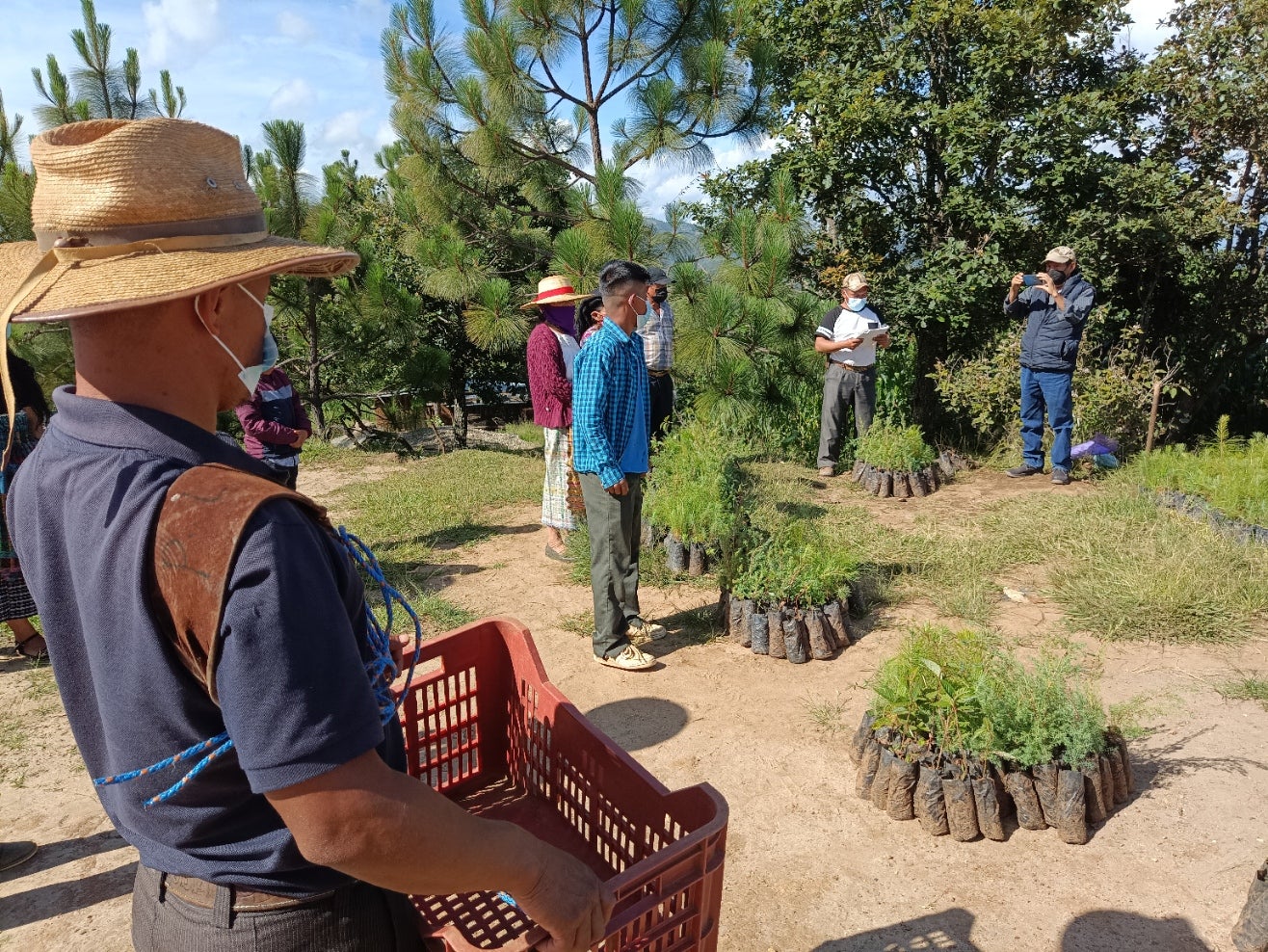
Council of Indigenous Authorities for the Protection of Natural Resources Ra'lwa'lule, (Mayan K'iche'), Guatemala
In San Pedro Jocopilas, department of Quiché, the reforestation work continues. In 2021, the community started a long-term project with the support of the Keepers of the Earth Fund in which the forests were given maintenance and pine seedlings were grown in a greenhouse. In this second stage, the trees will be planted as part of a reforestation campaign involving the entire community.
Comca'ac Seri community of Punta Chueca (Comca'ac), Mexico
This Comca'ac (Seri) community suffers from a constant lack of water, which affects various aspects of the lives of its inhabitants and is one of the causes of emigration. To alleviate the situation, the Council of Elders organized the purchase of four cisterns and the construction of bases to install them in Punta Chueca, in front of the rural hospital. More than 1,300 Comca'ac Indigenous people benefit from this work.
Central Agraria Sindical Originaria Campesino Quiripujo Ponchos Wayrurus (Aymara), Bolivia
The commissions formed by the Aymara communities in the Katari River basin established the need to implement traps to contain the garbage that moves from the city to Lake Titicaca via the rivers. This project brings together different groups to implement a garbage trap on the Seque River, one of the main tributaries of the Katari basin; municipal waste processing; and the creation of an educational space for urban reflection regarding the critical situation of the lake.
Yuku Savi Collective (Mixtec), Mexico
Following up on a previous Keepers of the Earth Fund project, Yuku Savi young people continue the work on the conservation of knowledge and environmental care. On this occasion, participatory workshops on climate change and its effects on this Mixtec community will be held. In addition, agroecological production and reforestation techniques will be shared using two species of native trees, with the participation of young people and Elders.
Resguardo Inga de Blasiaku (Inga), Colombia
The inchi tree is an Amazonian tree that serves as medicine, food, and raw material for the construction of houses and handicrafts. With the support of the Keepers of the Earth Fund, the Blasiaku reserve will plant inchi seedlings using the Traditional Knowledge of the Inga people to strengthen food sovereignty and promote environmental awareness with sustainable practices.
Lokiaka Community Development Centre (Ogoni), Nigeria
The Eteo community in the Niger Delta is affected by river poisoning by chemicals washed from the petrochemical industry. Lokiaka Community Development Centre, together with members of the Ogoni people, designed this project to provide no-interest revolving loans for 30 women affected by the water contamination. The intention is to aid them in buying and selling fish in order to sustain their families while they continue the replanting of mangroves and interface with the industry to find sustainable solutions to the impacts.
Himalayan Naari (Pahadi), India
In the Himalayas, a young girl in the Chakouri community died tragically of preventable causes because she lacked access to medical care. The women of Naari and the girls in her high school identified the need for regular medical help and education and organized this collaboration to set up medical camps. A general practitioner, gynecologist, and an ophthalmologist will visit the community twice a year for four-day medical camps at Himalayan Naari and at Himalayan InterCollege in the Kumaon region for the good of the Pahadi girls and women.
Indigenous Defense, Autonomy, and Self-determination
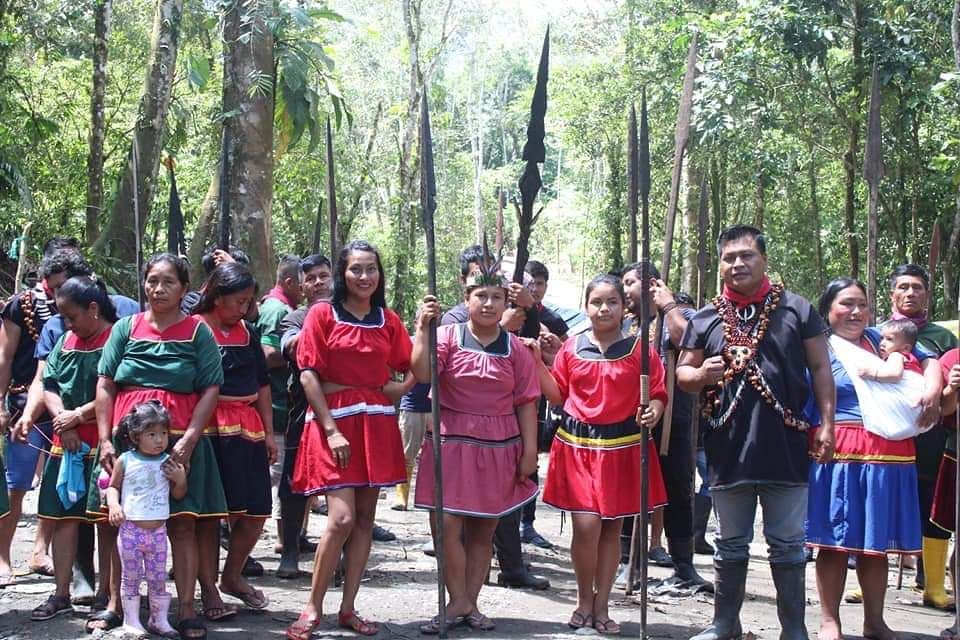
Fundación Kuankuan, Dureno, Cofán
Frontline Defenders: Individuals and groups from Lenca Peoples in Honduras, Cofán Peoples in Ecuador, Bribri Peoples in Costa Rica, Maya Q'eqchi' Maya Peoples in Guatemala, and Dolganin and Sami Peoples in Russia.
This year, the Keepers of the Earth Fund awarded nine grants to individuals or groups that have been threatened, criminalized, imprisoned, or attacked because of their work in defense of land and Indigenous rights. The grants were used for the collective defense of people in danger, guaranteeing them food, transportation, protection, spiritual strengthening, legal help, or media visibility for their situation.
Federation of Maijuna Native Communities (FECONAMAI) (Maijuna), Peru
FECONAMAI, in the province of Loreto, has a long history of work in defense of its territory and culture from government projects that put the Maijuna at risk. Last year, they received support from the Keepers of the Earth Fund to strengthen themselves as an organization in processes that had been interrupted by the pandemic. In 2022 they will continue working to defend their right to Free, Prior and Informed Consent, also promoting the commitment of young people, who will continue the work of this generation.
Terra Indigena India Vanuire, Arco-íris (Krenak), Brazil
In the context of the imminent approval of the marco temporal (statute of limitations), which alleges that Indigenous people only had rights to their lands until 1988—and not taking into account the hundreds of families that were expelled from their lands by discriminating policies—with this project the Krenak people developed activities to strengthen their political work, engaging with local and national authorities to defend, proposals and demand policies against deforestations, air pollution due to industrial farming near their lands.
Estor Association for Integral Development (AEPDI) (Q'eqchi' Maya), Guatemala
The community radio station Xyaab' Tzuultaq'a, founded by AEPDI and the community authorities, has suffered raids and criminalization by the State of Guatemala for using the 99.5 FM frequency. With a history of five years of broadcasting and social projects, the radio station proposes this project as part of its process of institutional strengthening and redesign of priorities, seeking to respond to the need to report on attacks related to freedom of expression and freedom of the press such as those they have suffered. Capacity-building workshops will be held and the creation of the Network of Maya Q'eqchi' Indigenous Correspondents will be promoted.
Coletivo Mura De Porto Velho (Mura), Brazil
Due to the pressure on their territories in the form of gold mining, deforestation, gravel extraction, and exploration in their forests, the Mura people in Capanã and Itaparanã will start building a methodology for political advocacy. It will involve more than 100 Indigenous people, who will develop knowledge to face the aggressions they have been suffering.
Nasa Kiwe Teck Sksxaw Indigenous Council (Nasa), Colombia
The Association of Indigenous Councils of Northern Cauca continues their alternative currency project for the sovereignty of the territory of the Chxaw Wala Kiwe. The goal is to create a local commerce system with its own physical currency and personnel trained in monetary circulation. The currency will be used for local exchange within the life plan of the Indigenous communities of the northern area of Cauca. Structuring a local economic system will allow them to make decisions about their resources autonomously and guarantee economic growth and exchange of their own products.
Koits Journalist Society - Sunuwar Welfare Society (Sunuwar), Nepal
The Sunuwar Indigenous community has been fighting against the Likhu hydropower project in the Kathmandu district. They were recently informed that the company behind the project is installing electric poles close to human settlements, which may cause a massive health impact. As a response, the Sunuwar Welfare Society started actions to raise awareness about the health impact of the high voltage transmission line of the hydropower project on Indigenous and local communities through interactions between lawyers, journalists, local government, and impacted communities.
Plan de Barrios Community (Lenca), Honduras
The Plan de Barrios community, nestled in the Opalaca Biological Reserve, is known for having started a community energy project and building a hydroelectric plant based on collective work. Despite the progress of the project, these Indigenous Lenca people still do not have an office to administer it. They plan to remodel a community building that will serve this purpose and also house the nascent community radio station.
Intergenerational Indigenous Knowledge and Bio-cultural Heritage Transmission
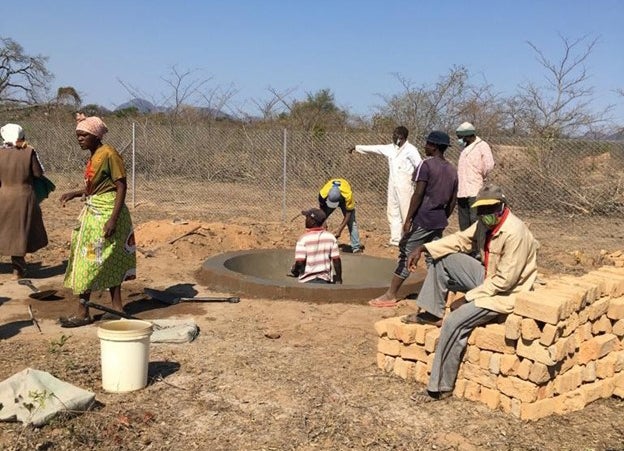
The Zienzele Foundation (Shona), Zimbabwe
The Shona women’s cooperatives in this region identified the need for a communal space to host their organizational meetings, health clinics, and marketing of their traditional handicraft work. In collaboration with the Zienzele Foundation, which had built a similar center in the region, they are building a community center complex near the village of Mupagamuri to serve the five surrounding villages. The building will provide the opportunity for members of this Indigenous community to support themselves with locally-based trade and a place where the Elders can teach handicraft skills to younger women.
San Pedro Jilotepec Community (Mixe), Mexico
In the Mixe region in southern Mexico, the Jilotepec community has carried out different work to protect their territory. In 2021, with the support of KOEF, they advanced efforts to obtain land certification, and now, in 2022, they work to maintain its Mixe bio-cultural heritage through the maintenance of sites of cultural and environmental importance. The project resulted from the community’s observation of cultural loss and ecological degradation, promoted to a great extent by the socioeconomic dynamics that oppress many Indigenous communities.
Integral Rural Development Project Vicente Guerrero (Nahua), Mexico
Among the adults of two communities in Tlaxcala, located in central Mexico, there is concern that future generations will stop speaking the Nahuatl language and lose their native food culture. To prevent these losses, they want to share their traditional knowledge through dialogue and exchange with children and young people. Workshops and community meetings will be organized in order to strengthen and preserve the Nahua identity and cultural and biocultural heritage. Eventually they hope to involve neighboring communities.
Ñuu Xini Ndoyo, El Añil (Mixtec), Mexico
This Mixtec community has a forest reserve governed by agreements put in place at its inception. The agreements, being oral and very old, will be updated so that they respond to the current needs of the community and guarantee the conservation of the reserve via management that respects nature and the spirituality of the people. A land analysis, written regulations, demarcation of the reserve, and the recovery of communal pools and sacred sites will be carried out.
Los Tejocotes, San Juan Mixtepec Community (Mixtec), Mexico
The constant threat and harassment by mining companies to reopen this mine, which had its production peak during World War II, have put the community of Los Tejocotes in the Oaxacan Mixteca on alert. The Mixtec community is restoring a building that belonged to the mining company, to turn it into the Los Tejocotes Mine Memory Museum. The museum will keep some historical objects from the mine, as well as the stories of the miners and information on the damage to health and the environment left in the community.
Raxalaj Mayab' Community Center for Mayan Art and Philosophy (Maya), Mexico
In the Maya community of Felipe Carrillo Puerto in the Yucatan Peninsula, the Escuelita Autónoma Maya provides children and youth with a living space in which the wisdom of the Maya people is shared, the language is preserved and history is recovered, the work of the land is valued, and community values of freedom and solidarity are built. With a grant from the Keepers of the Earth Fund, the community will prepare the physical space for the Escuelita and purchase needed materials.
Zihuame Xotlametzin (Nahua), Mexico
Last year, this group of Nahua women in the state of Guerrero, with the support of the Keepers of the Earth Fund, installed several natural pharmacies in different areas of their region to promote the Traditional medicine of their culture. Due to the need to continue learning and promoting health knowledge, they continue their work with an emphasis on self-training and dissemination campaigns. Training workshops on the cultivation and processing of medicinal plants will be organized, and their use will be promoted through information campaigns.
Indigenous Association of Councils and Traditional Authorities of the Zone of Chorrera Amazonas (AZICATCH) (Uitoto, Bora, Okaina, and Muinane), Colombia
After an assessment of the impact of COVID-19 in the 22 councils of AZICATCH supported by the Keepers of the Earth Fund last year, the need was identified to deepen the knowledge on the Traditional medicine of the Peoples of the Association. In 2022, AZICATCH will implement meetings in the malocas to guarantee intergenerational transmission of its own medicine, relying on the knowledge holders of each member Indigenous group.
ARHI Social and Educational Institution (Bodo), India
The knowledge systems of natural foods and Traditional medicines are disappearing among Bodo communities, both of which can act as a vector against COVID-19 and other diseases. The Bodo community in Assam, Northeast India, is ready to take immediate measures to restore, revive, document, and disseminate traditional medicines of the Bodo tribe.
Revitalization of Indigenous Languages
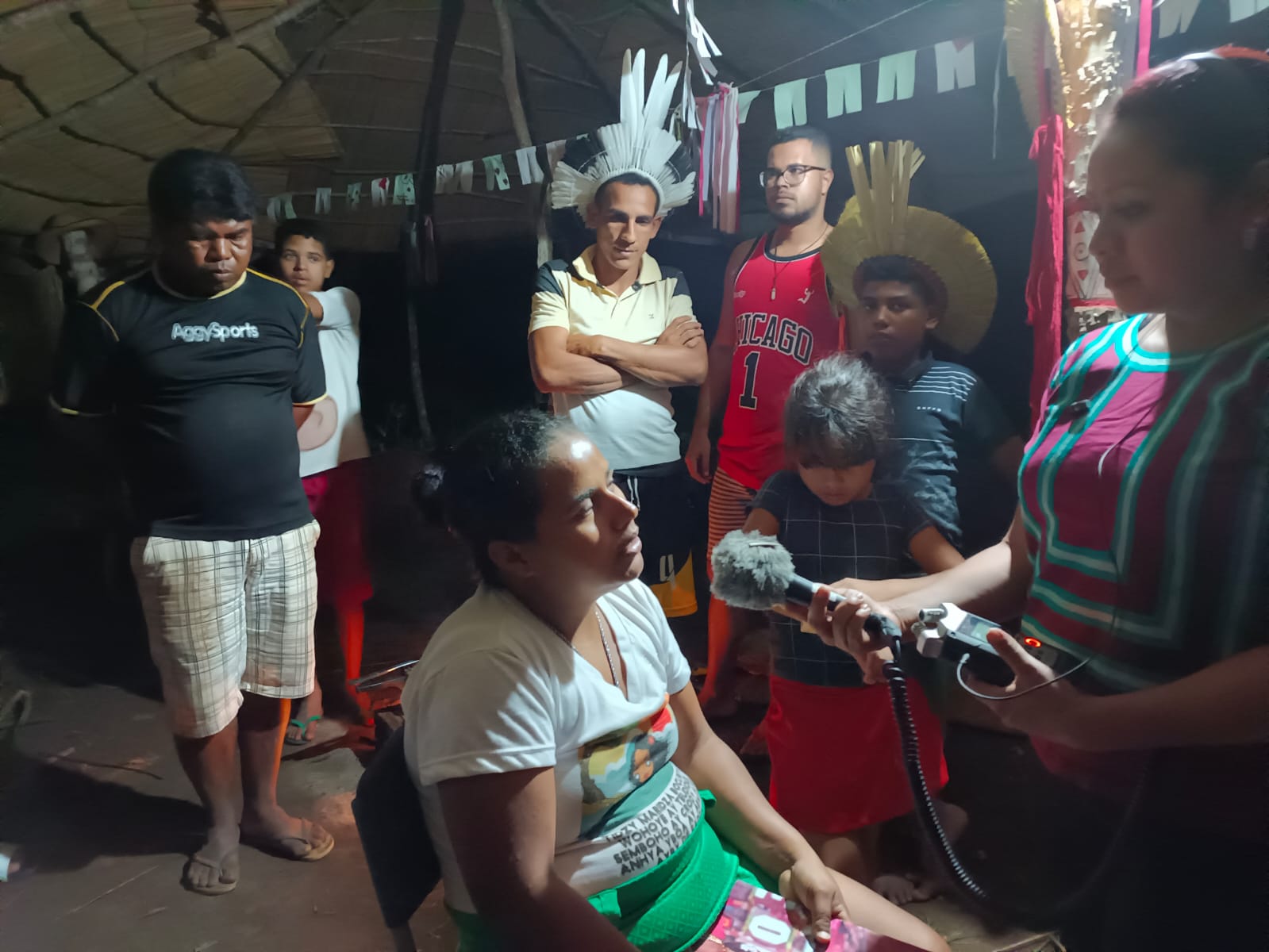
Associação da Lingua e Cultura Kariri-Xocó (Kariri-Xocó), Brazil
After several years of work in the revitalization of the Kariri language (Dzubukuá Kipeá) in Porto Real do Colégio using borrowed spaces, the learning group needs a bigger place of its own. The Association will build a space inspired by their traditional Kariri buildings, with natural and self-sustaining lighting and ventilation, to continue the practices of traditional cultural activities and the Kariri language with a wider audience.
Botswana Khwedom Council (San), Botswana
During a community engagement session, community members expressed their concern about how quickly the Tsixa language is disappearing, with few remaining people speaking it within the community. They emphasized that language is a big part of their identity and culture and decided to implement a project aimed at protecting and preserving the language, culture, and tradition of the Tsixa San Community of Mababe, Botswana. Now, they are implementing workshops to develop the Tsixa orthography and organizing mentorship sessions to strengthen youth knowledge of their culture, tradition, identity, and language. At the end of the project, they will hold a language and cultural festival competition.
Mubasen (KhoeSan), South Africa
Having very few fluent speakers, the N/uu language is highly endangered. N/uu has been spoken by KhoeSan Peoples for many centuries. The community identified the need to spread the use of their language among their people and decided to take action by teaching it in different places. The short-term objective is to get the participants to a basic level of conversation.
Quilloac Commune and Quilloac Intercultural Pedagogical Higher Institute (Kichwa), Ecuador
The community assembly of Quilloac (Cañar), together with the Institute of Higher Education Quilloac determined that one of the main objectives for the well being and rescue of the Kichwa cultural identity is the development of projects focused on the revitalization and recovery of the Kichwa language. With this in mind, they began producing teaching materials that motivate children and young people to use and learn Kichwa. A music album will be produced and stories compiled for later publication.
Nemuk Collective (Ayöök), Mexico
The members of the Nemuk Collective realized that many people who were migrants and who came from Totontepec in the Mixe region shared losses and problems, especially in relation to language, identity, and the breaking of the line of transmission of their oral tradition. In an effort to reclaim their identity and recover their language and community ties, this year they are developing a method for teaching Ayöök as a second language and creating a community repository of oral tradition.
Associação Conselho da Escola Pamaali (Baniwa and Koripako), Brazil
The Association, composed of 18 Baniwa and Koripako communities from the Amazon region, has been working to introduce their own languages to the state schools of their places, which usually offer education only in Portuguese. As a means to take more control of the education of their children, they are going to train and qualify young teachers with Traditional Knowledge and techniques. The workshops will be recorded and systematized in six booklets to be distributed and used by children and young people in 86 communities and 72 schools of the Baniwa and Koripako Peoples.
COLMIX, Mixe Collective (Mixe), Mexico
One of the main lines of work of the Mixe Collective is the development of materials for the dissemination of its language and the creation of books for early readers. The lack of didactic materials for teaching the Mixe language has also been identified, such as illustrated alphabet books, books for early readers, and other materials that make their language visible in different media. Faced with these needs, in 2022-2023, the group will organize sessions to prepare teaching material for reading and writing in the Mixe language, which includes design, editing, and printing.
Oráculo Comunicação, Educação e Cultura (Terena), Brazil
A common observation made by Terena language teachers is the lack of didactic material and the concern that the new generations do not learn to speak the language outside of school. Faced with this, this community in Mato Grosso state developed some teaching materials and now intends to finish the Terena language teaching mobile app, taking advantage of the wide access to the internet and technology that the youth have. App use will be implemented in public schools by the teachers, who will also participate in the app development.
Alcaldía del Común de Izalco (Nahua Pipil), El Salvador
Faced with the cultural and environmental crisis in the world, the members of the Alcaldía del Común de Izalco consider that it is urgent to revitalize and recover the Nahuat Pipil language, which is at risk of disappearing. With the intention of revitalizing the Nahuat Pipil language and worldview, activities will be carried out with children, youth, and grandparents. The different generations will share important knowledge of their tradition. Among the activities to be carried out in this community near Sonsonate are a Nahuat school, cosmovision workshops, organic gardens, and an artistic and cultural festival.
Kumandin Language Group (Kumandin), Russia
The Kumandin language is highly endangered, with only one fluent speaker left. All of the language teachers died during the Covid pandemic and urgent actions are needed to keep the language alive. The group will organize meetings seeking to follow the master-apprentice program with the remaining Elder who speaks Kumandin. The courses will be online because participants live in different cities and regions of Russia.
Council of Indigenous Communities of Nahuizalco (Nahuat Pipil), El Salvador
The Council determined that young people are losing their culture and language, for which they see it necessary to implement Nahuat language courses aimed at the new generations in the hope that they will commit to its preservation. In this way, they hope to influence the strength of the Nahuat Pipil identity and support the continuity of the history of their people.
Food Sovereignty
Hampiriypacha, Association of Seed Guardians and Runa Health (Kichwa Otavalo), Ecuador
The leaders of the Imbabura region realized that it is necessary to protect and reinforce the ancestral knowledge that the women of their culture have transmitted for generations. To this end, the Association organized knowledge workshops with the participation of grandmothers, daughters, and granddaughters, covering topics as diverse as territorial identification, heritage assessment, oral narration, ancestral medicine, and seed care. They hope that there will be a revaluation of their culture and that women will be trained to respond to health needs both in the communities and in the cities.
Indigenous Council Ziora Amena Community (Múrui-Muina), Colombia
Due to the confinement during the pandemic, the Ziora Amena community lost their seeds and crops and witnessed the abandonment of the maloca, their house of knowledge. The native grains are of cultural and nutritional importance for this Indigenous people, while the maloca is the place where traditional family gatherings take place. This community in the department of Amazonas decided to work on the recovery of these assets, restoring the maloca with materials from the region, collecting seeds, planting in the chagra, and transforming the cassava into products for sale.
Kusi Kawsay Association (Quechua), Peru
The new generations of the Sacred Valley that migrate to the cities are forgetting the way to feed themselves with native foods. During the Covid lockdown, it became clear that nutrition was the most important element to a good immune system. For this reason, the Indigenous community of Pisaq-Calca is building a seed bank that can promote food sovereignty. In addition, they will organize Andean food workshops.
Mañica Indigenous community (Quechua), Bolivia
The Quechua community of Mañica has a greenhouse that was built a few decades ago and was of great help during the Covid lockdown. They realized its great impact on the economy, food sovereignty, and community health, so they decided to build another one in order to expand their vegetable production. This will allow them to guarantee accessible and healthy food for the entire community in a climate and soil that make certain outdoor crops difficult.
Women in the Development of Indigenous Communities (Chinantec), Mexico
In Uxpanapa, in the southern part of Mexico, the Chinantec community has begun to notice a lack of fertility in the soil and other symptoms related to climate change, so they are starting work to heal the local ecosystem while continuing to produce food. A group of 60 Chinantec women will be trained in the production of vegetables with sustainable fertilization, pest control, and irrigation systems that do not harm the water and the land. Necessary food will be planted for the healthy and varied diet of the 60 families involved.
Community Agricultural Work Group, Xalitzintla por la Tierra (Nahua), Mexico
In the Santiago Xalitzintla community in the state of Puebla, the Nahua people realized the need to help each other collectively to continue cultivating the milpa in its traditional way: interspersed with fruit trees. This method, so important for their culture, economy, nutrition, and conservation of their environment, is being abandoned. Over the next few months, the group will be working on an agricultural and agroecological management project for the milpa through the exchange of knowledge and the production of organic fertilizers with the participation of the entire community. In addition, a seed bank will be created and the community nursery will be strengthened.
Collective of Chinantec Women in Action, Defending the Land and Territory in the municipality of Uxpanapa (Chinantec), Mexico
In Uxpanapa, this project originated from the need to carry out actions to curb climate change by producing food in a healthy and sustainable way. Practical training workshops will be held for 50 Chinantec women. They will integrate traditional and new techniques for fertilization in the plots and for the recovery of soil fertility. This group of Indigenous women hopes to achieve a decrease in diseases caused by the use of agrochemicals on the plots.
Indigenous Council of the Uxpanapa Valley (Chinantec), Mexico
In Uxpanapa in southern Mexico, this group of women who work for self-determination and the leadership of Indigenous women found themselves with the need to recover the traditional milpa system, which requires having other crops on the same plot. To do this, 30 Chinantec women who already have experience in this kind of planting will produce food collectively on a shared plot of several hectares. They will also receive soil conservation and water retention workshops, as well as training in production techniques.
Amaranth Network Cooperative of the Oaxacan Mixteca (Ñuu savi), Mexico
Following the COVID-19 pandemic and several years of reflecting on food, pollution, and its relationship with diseases, this cooperative will continue its work for food sovereignty, including an awareness campaign on healthy eating. The producers of this region in the south of Mexico will elaborate on organic fertilizers and will be trained in the production and processing of amaranth. The goal is to continue caring for life from the community’s own worldview, which entails caring for the health of the people and the Earth at the same time.
Collective of Women Defenders of the Land and Territory (Tseltal), Mexico
This group of women from the municipality of Chilón, Chiapas, organized the installation of food production systems in the backyard of 20 Indigenous families. Given the shortage of food due to the lack of local food production strategies, they designed this plan focused on the production of vegetables, rabbit meat, eggs, and chicken meat. The activities will strengthen the family economy, promote a healthy and balanced diet, and allow the soil to be cared for through crop rotation.
Nashulai Maasai Conservancy (Maasai), Kenya
The Nashulai group realized that the abandonment of their traditional communal grazing lands and breed of cattle was contributing to the desertification of the soil. At the beginning of the COVID-19 pandemic, they also identified the need for a diversification of their economic activities. The goal of their project is to expand their traditional livestock raising, kitchen gardens, and poultry shed.
Mesoamerican Permaculture Association (Kaqchiquel), Guatemala
With a long history of work in the area of food sovereignty, the Mesoamerican Permaculture Association seeks to expand its reach with the support of the Keepers of the Earth Fund. In addition to strengthening the knowledge of the team, they will carry out activities for the benefit of the community such as permaculture workshops in a local school, and delivery of Super Atol (a product derived from amaranth, of great nutritional value) to a hospital and to pregnant mothers. The objective is to promote the production and use of amaranth and other native seeds to defend food sovereignty.
Association of the Peasant Unity Council of Guatemala (Maya Q'eqchi'), Guatemala
Wanting to implement agroforestry systems that include fruit species for diversified production on their plots, the communities of Alta Verapaz found that forest and fruit plants are expensive. For this reason, they are going to repair their nursery, which had been built with support from KOEF in 2021, and expand the scope of their activities. The Association will implement a barter system with the communities to plant forest and fruit species so that the nursery becomes a seedlings production center, and plants will be distributed in neighboring communities.
Mayan Network of Guardians of the Seeds - CRIPX (Maya), Mexico
Given the awareness that Indigenous food systems are threatened by social, economic, and political processes that attempt to displace Indigenous forms of production in order to impose the capitalist and agro-industrial mode, the Mayan Network seeks to strengthen the organizational mechanisms of its member communities through workshops, forums, and meetings. These events will address the recovery, defense, and protection of native seeds, as well as the identification of social, political, and legal threats to community food systems.
Association of United Women for Sustainable Development (Quechua), Bolivia
After the transport and trade problems caused by the COVID-19 pandemic, which affected the economy of Indigenous families in Molani and Loman communities, the Association will implement a value-added vegetable production and marketing project, complemented with workshops on the adoption of sustainable agroforestry practices, organizational strengthening, and business development with the participation of young people and women from both communities.
